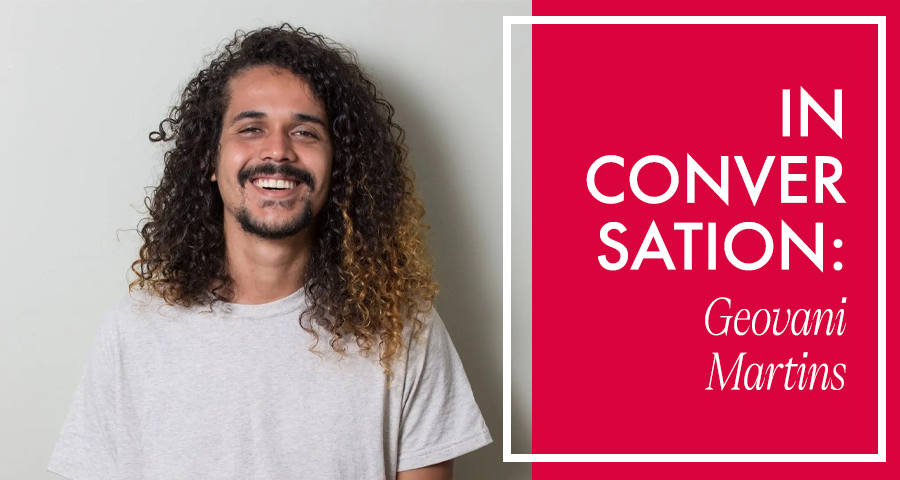Geovani Martins’s Via Ápia is a novel set in Rocinha, Rio de Janeiro’s largest favela, and takes place from July 27, 2011 to October 26, 2013. During this time, the lives of the neighborhood’s residents were profoundly altered by a military occupation and “pacification” in anticipation of the upcoming World Cup; in exploring the fall out, Via Ápia describes what happens when the vitality of carpe diem meets the fate of broken young men—those who had “been born poor, [were] still poor, and would die poor.”
In this interview, I spoke with Martins about setting narrative expectations, telling the collective stories of residents in occupied Rocinha, and collaborating with his translator, Julia Sanches, in bringing this epic novel into English.
Tiffany Troy (TT): The first sentence of Via Ápia is: “They aren’t singing ‘Happy Birthday’ for another hour.” How does this set up the novel that follows?
Geovani Martins (GM): My intention with that opening was to prepare the reader in following the many expectations that the characters will face throughout the story. Early in the book, we learn that the police are planning to occupy Rocinha, and the entire first part is structured around this anticipation that surrounds the characters. Since it’s an official operation, there’s even a set date for the arrival of the police, which creates something like a countdown to this transformative event. So that reference to the clock right at the beginning helps, in an interesting way, to place the reader in this race against time.
TT: Can you speak about the overarching structure of this novel? How did you come to having three parts, and why repeat “RIO” in each of the chapter titles?
GM: When I was thinking about structure, the first major decision was to work with five characters. I initially considered a simpler structure, focused only on two brothers, but I soon realized that my intention with Via Ápia was to tell a collective story. I wanted to speak more broadly about a generation that was deeply affected by this moment of police repression. In trying to paint that wider picture, I defined each character around the main themes I wanted to explore in the book, so that each one would allow me to deepen a different perspective on the situation. I wasn’t interested in just one character’s view; what mattered to me was the intersection of their experiences. READ MORE…


